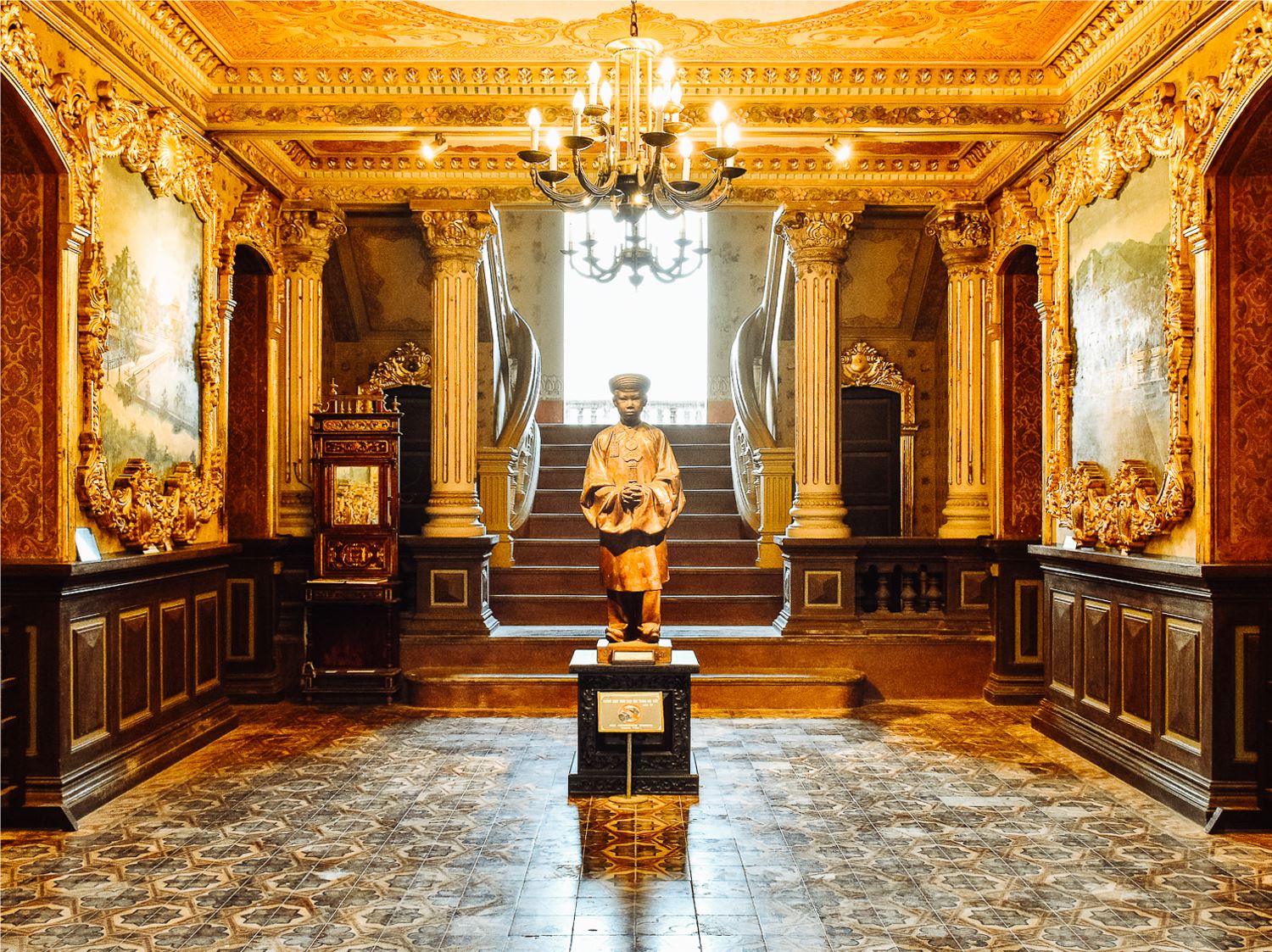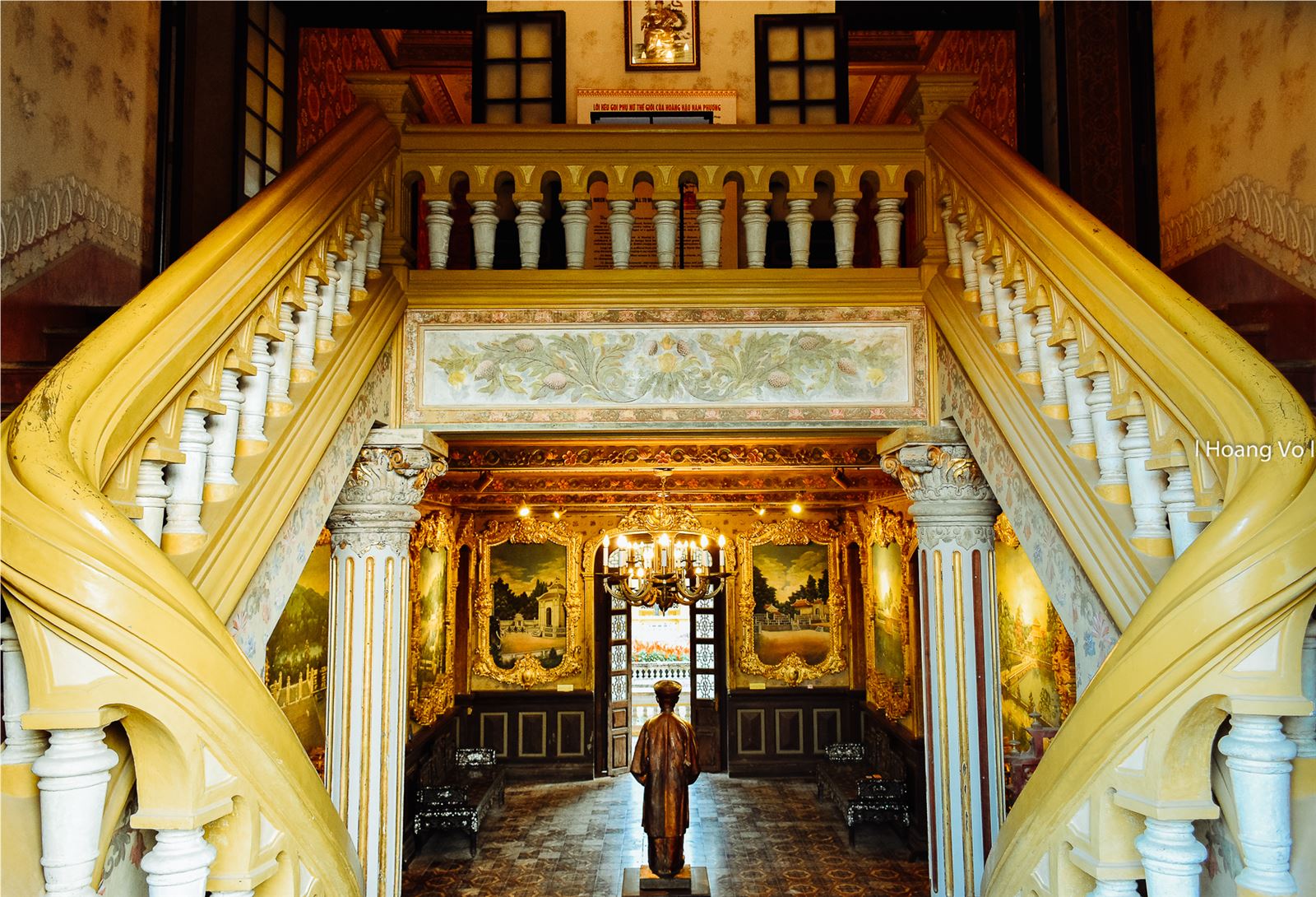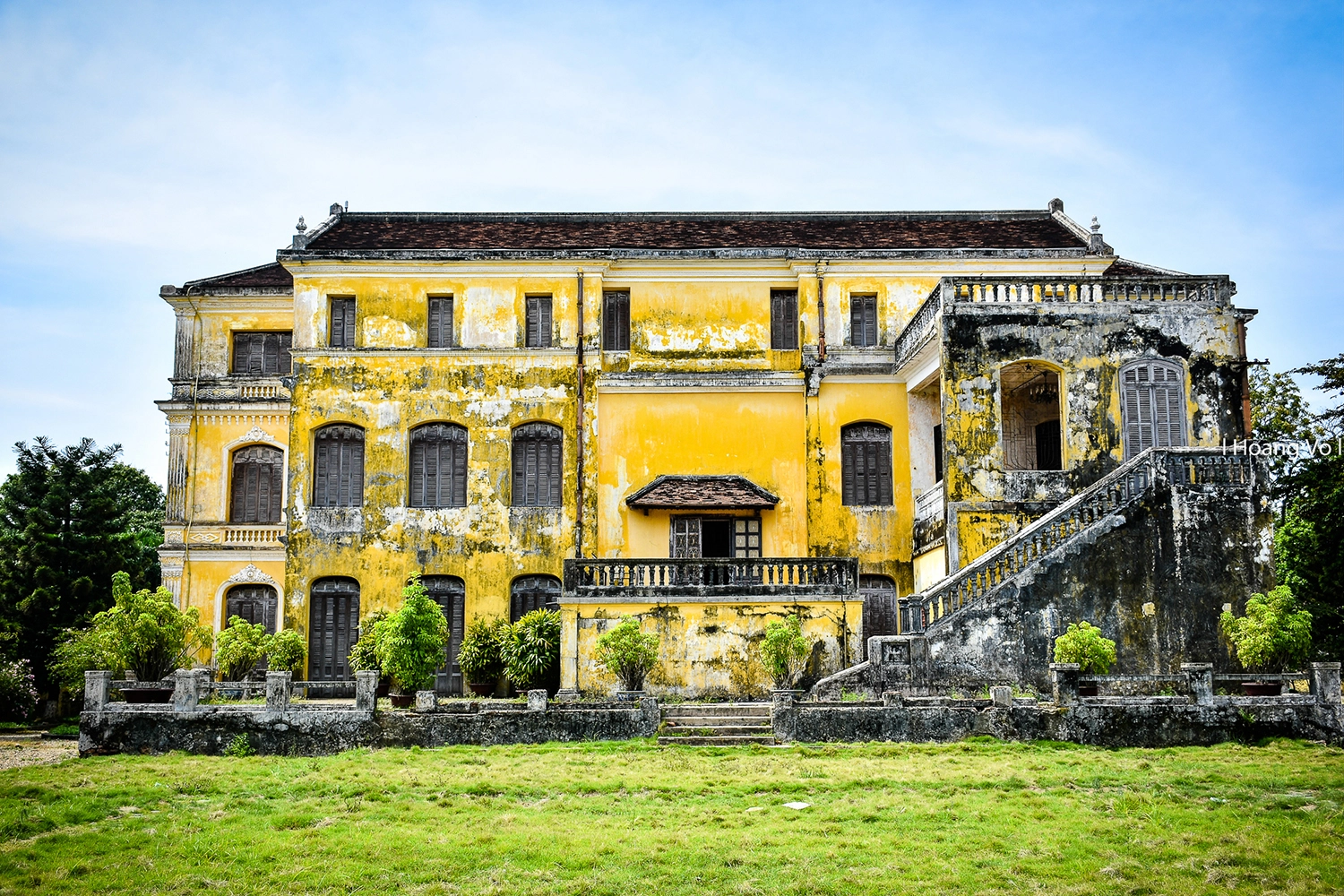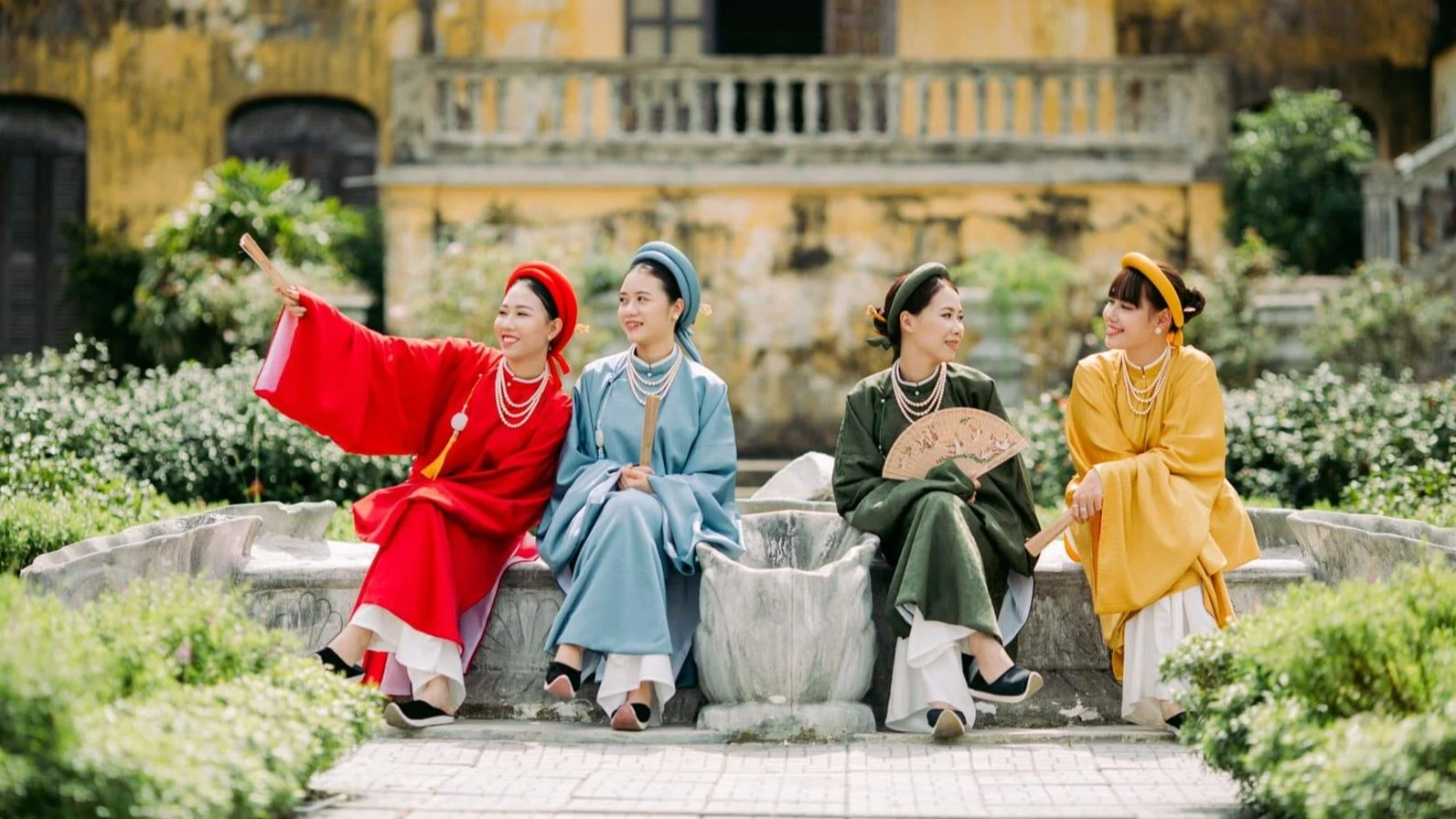For many years, An Dinh Palace has remained silent on the banks of the An Cuu river "cloudy with clear sunshine", witnessing all the contemplations of history.

Photo: VnE
An Dinh Palace is a unique artistic architectural work of the Nguyen Dynasty, marking the period when Vietnamese art began to be significantly influenced by the European neoclassical style. This work is a common point of intersection between 3 architectural backgrounds: Hue garden house, French and Chinese architecture. And perhaps there will be no villa or ancient palace that owns this characteristic of An Dinh Palace.
This is a gift built by King Dong Khanh and originally named Phung Hoa Palace with the intention of being a gift for his eldest son, Prince Nguyen Phuc Buu Dao (King Khai Dinh). Later, it became the potential of the Eastern Palace of Crown Prince Vinh Thuy (King Bao Dai) and the residence of King Bao Dai's family after he abdicated.

Photo: Vietnamtimes
An Dinh Palace has a flat terrain, a total area of 23,463m2, surrounded by brick walls, surrounded by iron bars.
The large and small works in An Dinh Palace all have a close relationship with each other in a harmonious overall relationship with many meanings, creating a unique, quiet and charming architectural picture in the heart of Hue city. An Dinh Palace is intact with about 10 works, including a boat dock, main gate, Trung Lap communal house, Khai Tuong floor, Cuu Tu Dai theater, zoo, lake... Now the palace only has the main gate, Trung Lap communal house and Khai Tuong floor are quite intact.
The main gate is built in the style of three gates, two floors of long gates and the palace is decorated with very elaborate embossed porcelain. The gate is the convergence of palace and royal motifs at that time such as the four spirits, the two dragons worshipping the moon, the lotus vase, the flowers, and couplets,...

Image: Kim Ngan/VNN
A few steps away is Trung Lap communal house. The communal house is built with an octagonal communal structure, on a high foundation. The roof of the communal house has 2 layers in the form of an ancient floor. The lower roof has 8 sides, the upper layer has 4 sides. The 12 banks of the embossed roof embossed 12 dragons as if flying out in 4 directions and 8 directions of the universe. In the heart of the communal house, there is a bronze statue that is a portrait of King Khai Dinh wearing a martial uniform, this is the first statue carved with the scale of a real person in Vietnam.
Next is the Khai Tuong floor, the main building of An Dinh Palace. The name of the floor was given by King Khai Dinh, "Khai Tuong", which is the place where good omens originated. The floor consists of 3 floors, built with new materials and built in the style of a European castle.


Photo: VnE
The interior is very meticulously and elaborately decorated. Prominent in the lobby on the 1st floor are 6 beautifully stylized apricot and lotus leaf carvings. Although these six paintings are not named, when looking at the drawings, we can easily recognize that they are the real perspective of the mausoleums of Gia Long, Minh Mang, Thieu Tri, Tu Duc, and Dong Khanh.
As for the 6th painting, it is not clear from the inside out what work he has painted. However, there is an opinion that this may be the Khai Dinh mausoleum when it is in the form of a sketch on the drawing. The reason why the painting is not the same as the current architecture is because after returning from a trip to France in 1920, King Khai Dinh changed the design of the mausoleum to the Western style, so it is no longer the same as before.

Photo: VnE
Behind the Khai Tuong floor was the Cuu Tu Dai Theater, but this place has been completely destroyed and now only the foundation on the green grass remains. Under King Bao Dai, this was a place to perform and reform the royal family.
Today, An Dinh Palace is a work in the complex of relics of the ancient capital of Hue that has been recognized by UNESCO as a World Cultural Heritage Site. It can be said that the artistic and cultural values of this entire project always have a strange attraction for tourists who are lost.
Synthetic Migo
